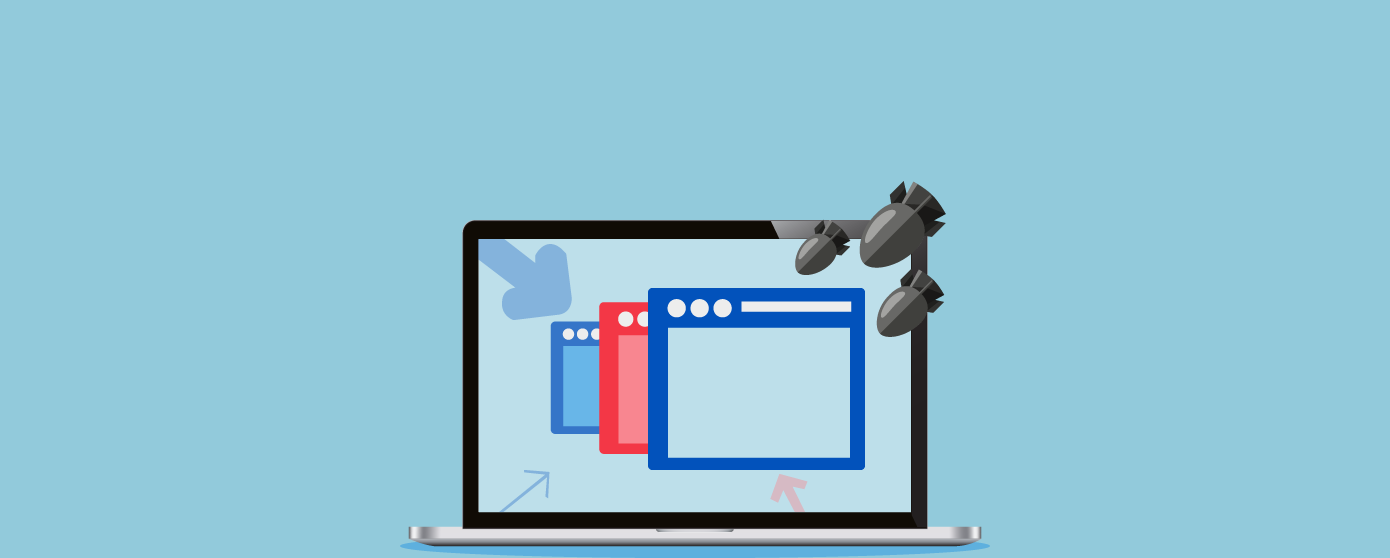
DDoS attacks have always been a popular attack vector among hackers and continue to be one of the most common attack vectors of 2021. These attacks aim to limit the availability of a website/web application/service to the intended user. Application layer DDoS attacks are a particular type of DDoS attack that targets the application layer. They disable specific functions or features of a website/web application by overusing them. These attacks are often used to distract IT teams of organizations from ongoing security breaches.
In this article, we take a closer look at the application-layer DDoS attack and how to mitigate it.
The Application Layer is layer 7 of the Open Systems Interconnection (OSI) Model of the internet, developed by the International Standards Organization (ISO). The OSI model is not a representation of the actual technology involved in networking communications but is a theoretical model used to describe the processes.
In this model, each layer only interacts with the layer that is present directly above or below it. Layer 7 is the topmost layer of data processing that is just underneath the surface of the applications with which the users interact. Its role is to pass user data through the stack. DDoS attacks often take place in this layer and interrupt the regular flow of traffic to a website/web application.
Application Layer DDoS attacks or layer 7 DDoS attacks are low to mid-volume attacks that target specific applications and disrupt the delivery of content to the user. These attacks are usually carried out with the help of Internet of Things (IoT) devices. With the rapid increase in unsecure IoT devices today, hackers have many opportunities to launch more advanced DDoS attacks in the application layer. The different types of application DDoS attacks include HTTP(/s) Flooding, Slowloris, BGP Hijacking, Slow Post, Mimicked User Browsing, Slow Read, Low and Slow Attack, and Large Payload POST.
Application layer DDoS attacks work by overwhelming the webserver with multiple requests at a time to make the application unavailable to clients. Even though they are usually low-volume attacks, they can have devastating impacts on businesses. These layer 7 attacks are particularly dangerous because they directly impact the user experience. In addition, they can cause downtimes, affect business continuity, and strain web applications.
These attacks are also very hard to detect because they attack application-specific resources and use malicious bots that make seemingly innocent and legitimate requests.
CAPTCHA verification is a web technique that is used to determine whether the user is a real person or spam bot. CAPTCHAs challenge the users with manipulated letters or symbols which rely on the human ability to be decoded. JavaScript computational challenges are another way to filter out requests from botnets or attack computers. Most botnets are unable to respond to these complex challenges.
Behavioural analytics is a security process that uses technology like AI and machine learning to observe and make notes of user and entity behaviours. It then detects any abnormal activity or traffic that doesn’t match the everyday/usual patterns. This model uses advanced analysis, data from logs and reports, and threat data to effectively identify abnormalities that might indicate malicious behaviour. According to tech experts, this method enables accurate detection of bad actors that could threaten your system.
A web application firewall acts as a shield between your applications and the internet. An intelligent WAF can manage, filter, and analyse traffic from different sources. WAFs operate with the help of rules and policies that can be customised and updated with ease and speed. This helps it to respond to attacks faster. A WAF provides the best defence against some of the most common DDoS attacks including layer 7 attacks. Managed WAFs screen the layer 7 traffic and feed data directly to cybersecurity experts who can identify malicious traffic trying to disrupt your services.
The AppTrana Web Application Firewall is equipped with a fully managed Behavioural DDoS Protection Solution that is designed to protect against sophisticated, layer 7 DDoS attacks in minutes, with the first mitigation starting in under a minute. It can process huge volumes of requests in seconds and its policies are auto-configured based on the behaviour of the application requests instead of hardcoded limits.
In addition, AppTrana is the only security solution that provides comprehensive protection against bad bots. Built on AI/ML technology, it comes with features like Good Bot Pretender Detection, Fingerprinting and JavaScript Detections, Integrity Checks, and Behaviour Anomaly Detection to ensure effective protection against malicious bots trying to orchestrate attacks.
Stay tuned for more relevant and interesting security updates. Follow Indusface on Facebook, Twitter, and LinkedIn
This post was last modified on January 2, 2024 17:21
A Managed WAF is a comprehensive cybersecurity service offered by specialized providers to oversee, optimize,… Read More
Explore crucial tactics like Asset Inventory, Patch Management, Access Control & Authentication, and additional best… Read More
Delve into the data privacy questions including consent protocols, data minimization strategies, user rights management,… Read More